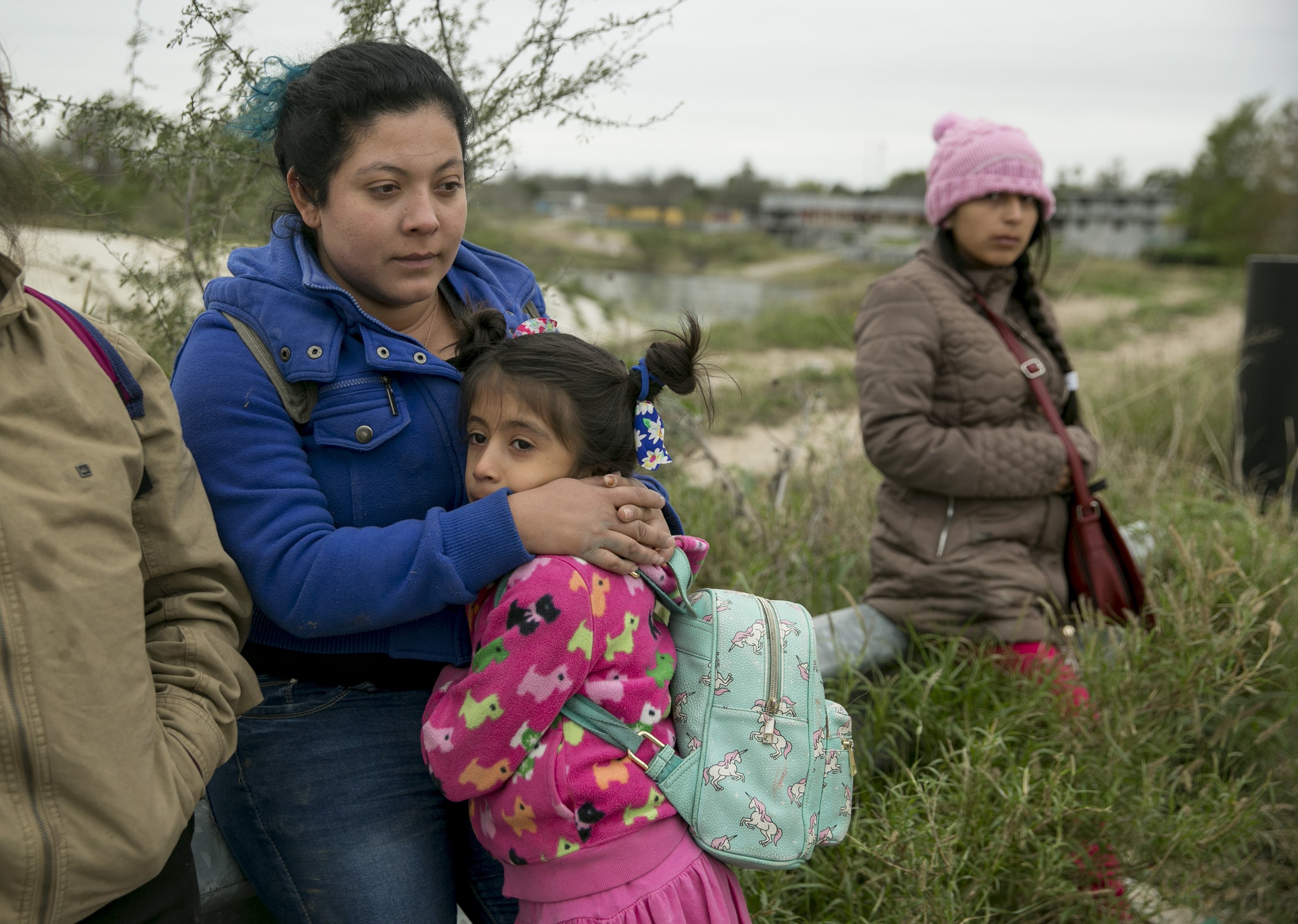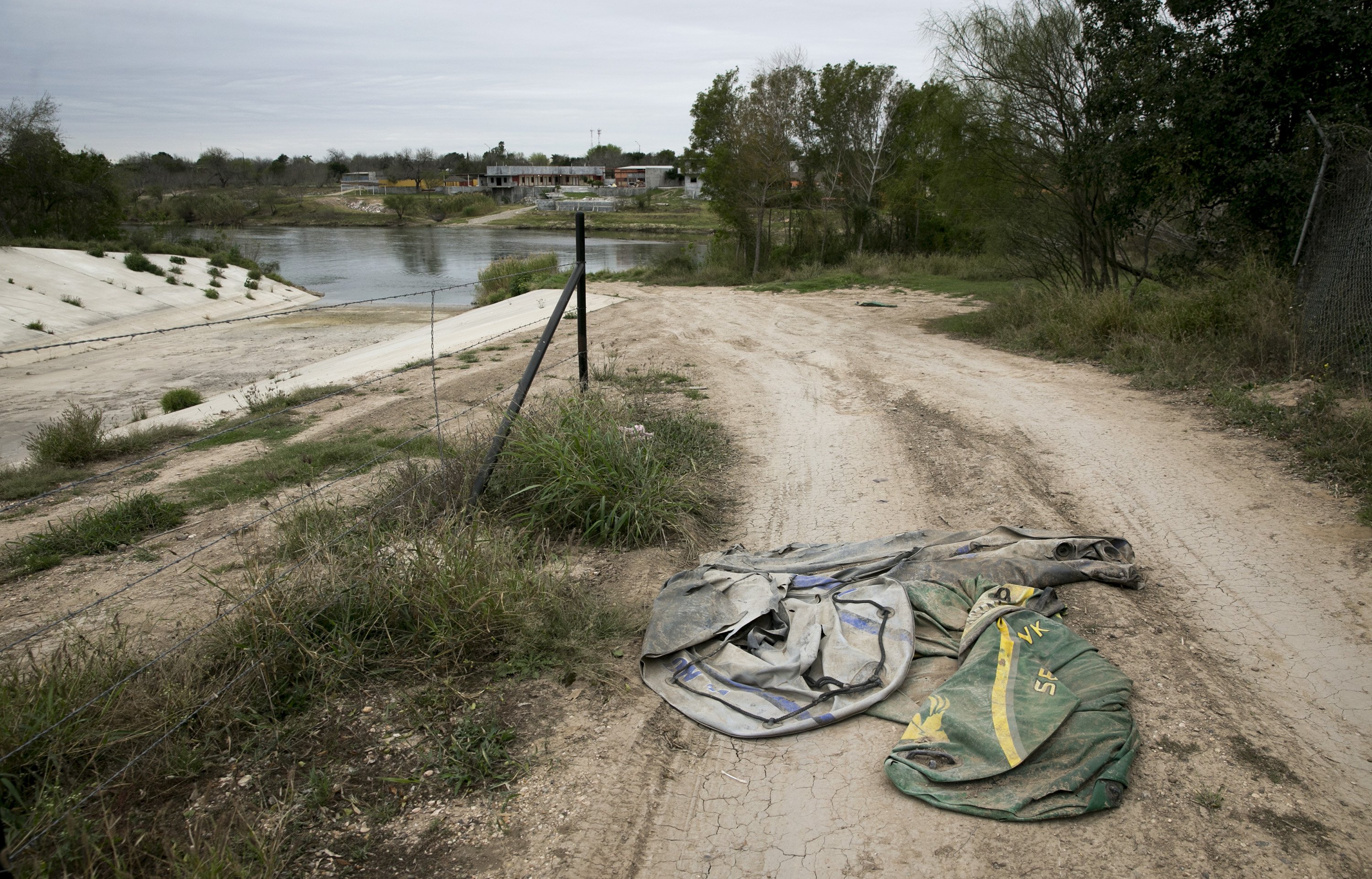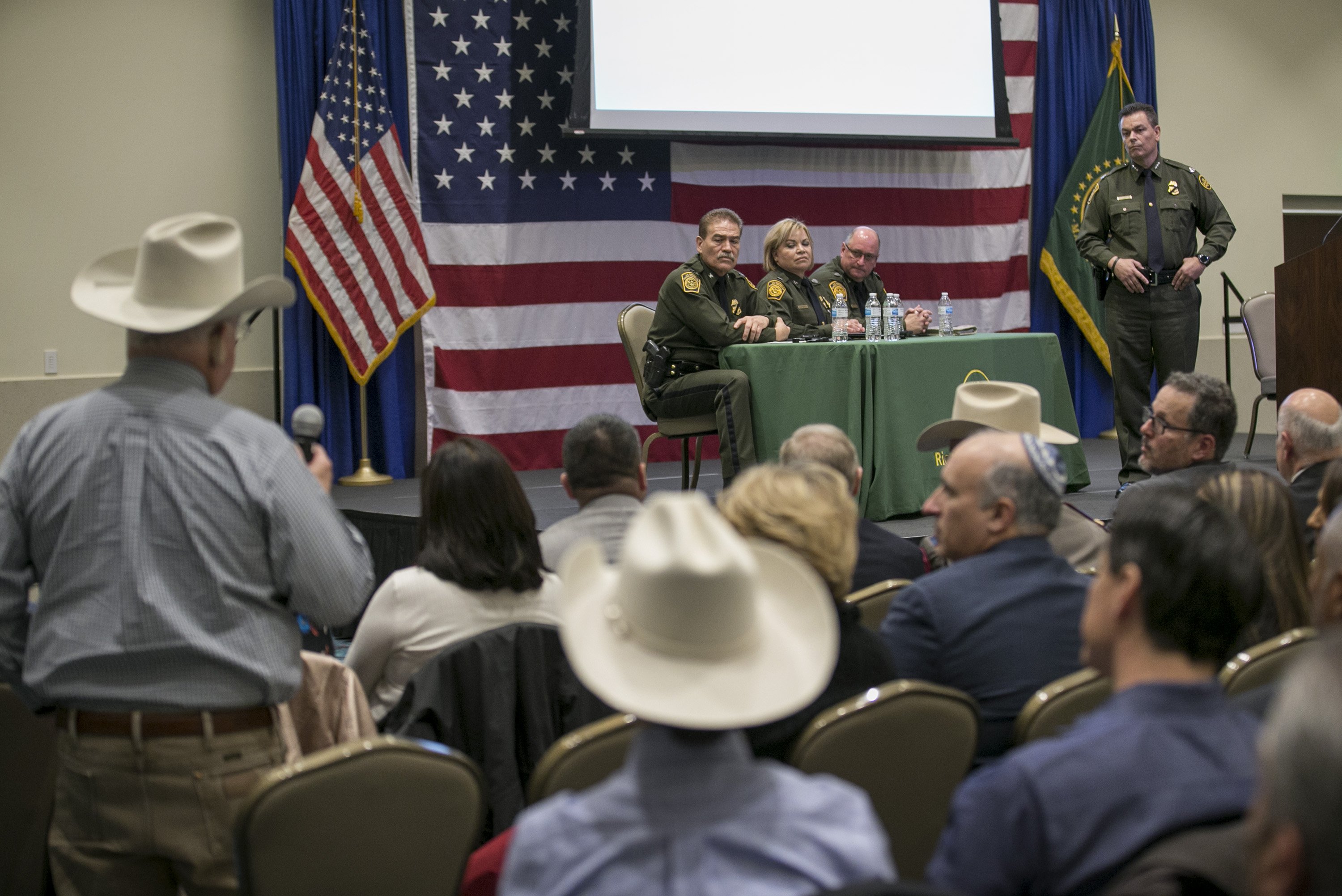In Roma, concern and support for a fence
The Rio Grande runs between Roma, Texas, right, and Ciudad Miguel Aleman in the Mexican state of Tamaulipas. A future section of the border wall could run through the riverfront below the bluffs in Roma. [JAY JANNER/AMERICAN-STATESMAN]
ROMA — On a recent Friday afternoon, Jessica Figueroa pulled into the driveway of her home on Sebastian Street near downtown Roma. Like her neighbors, Figueroa’s backyard abuts the banks of the Rio Grande in one of the border’s busiest smuggling corridors.
Starr County accounts for nearly one-third of immigrant apprehensions and about the same percentage of marijuana seizures along the border and represents what Border Patrol officials have called the most “volatile” stretch of the Rio Grande.
Border Patrol agents told the American-Statesman in 2017 that only about 40 or 50 agents patrol the 70 mile-long county on a given shift.
Despite the activity in Starr County, there is no border wall here, in large part because of concerns about flooding. Unlike Hidalgo County downriver, there is no levee in Starr County and neighborhoods are built right up along the river, leaving little space for fencing. In 2010, the U.S. Section of the International Boundary and Water Commission, which regulates the flow of the Rio Grande, concluded that a border fence could cause “substantial increases” in floodwaters and denied approval for the border wall project in the county.
But a year later, in what opponents saw as a capitulation to the Department of Homeland Security, the agency reversed course and approved the wall, saying it wouldn’t exacerbate flooding.

Starr County is slated for eight miles of border fence, funded last year by Congress, including a stretch in the 250-year-old city of Roma, once a transit point for cotton shipped by steamboat during the Confederacy.
For Figueroa, a mother of three, a border fence would be a welcome relief. “It’s scary to live so close,” she said. “Every day you see people crossing. It’s a daily occurrence. I know that many of the (immigrants) are not bad people, but you never know. My kids only play in the front yard. They’re only outside if we are here.”
A wall, she says, would help “a lot.”
“People would still find a way to cross, but it would help us feel safer.”
Her street ends at a drainage culvert, and as she speaks to a reporter, U.S. Border Patrol agents a few hundred feet away are processing a group of Central American women and children who had just crossed over in a raft and turned themselves in to a National Guard soldier. The women said they planned to seek asylum.
Freddy Guerra, Roma’s assistant city manager, said U.S. 83, the main highway that runs through the city, serves as a sort of barometer of public opinion on the wall. North of the road opinion runs against the wall, but “if you live south of 83 you want the wall there. You have people jumping into your backyard.”
But Guerra is concerned about the lack of information his city is receiving about the wall, which will have lasting effects on how the city of 10,000 people grows in the future. With construction reportedly beginning in September, Guerra calls the timeline “scary.”

“A lot of decisions will have to be made that can’t be reversed,” he said. “We were assured we would have input, but that really hasn’t been the case.”
Information from authorities had virtually dried up before the Texas Observer published 148 pages of detailed maps from a contractor’s website last month. The plans, which the federal government has told the city reflect just a general outline, show border fence running along the city’s famous bluffs.
Guerra is hoping that instead of a fence, the city can negotiate another design that would be advantageous to agents but also open to the public. “If a fence goes through the bluff that equals a lost opportunity,” he said. “We’re not using it right now, but ideally if it were designed in a different way we could highlight the biggest feature of the city. It seems out of sight, but it has a lot of potential that we’ll never be able to use if it’s built there.”
The city also worries the fence’s route will prevent a badly needed expansion of the city’s international bridge to bring commercial vehicles and an accompanying economic boost to one of the state’s poorest cities. Roma officials also fear a border fence could prevent construction of another water treatment plant, which would need space for intake pipes from the Rio Grande.
But the main concern remains potential floods. The fence would skip over the city’s main drainage culvert and allow for space at other areas where creeks empty into the river, according to the plan. “But in a big storm with lots of debris, those slats could easily get clogged up,” Guerra said.
